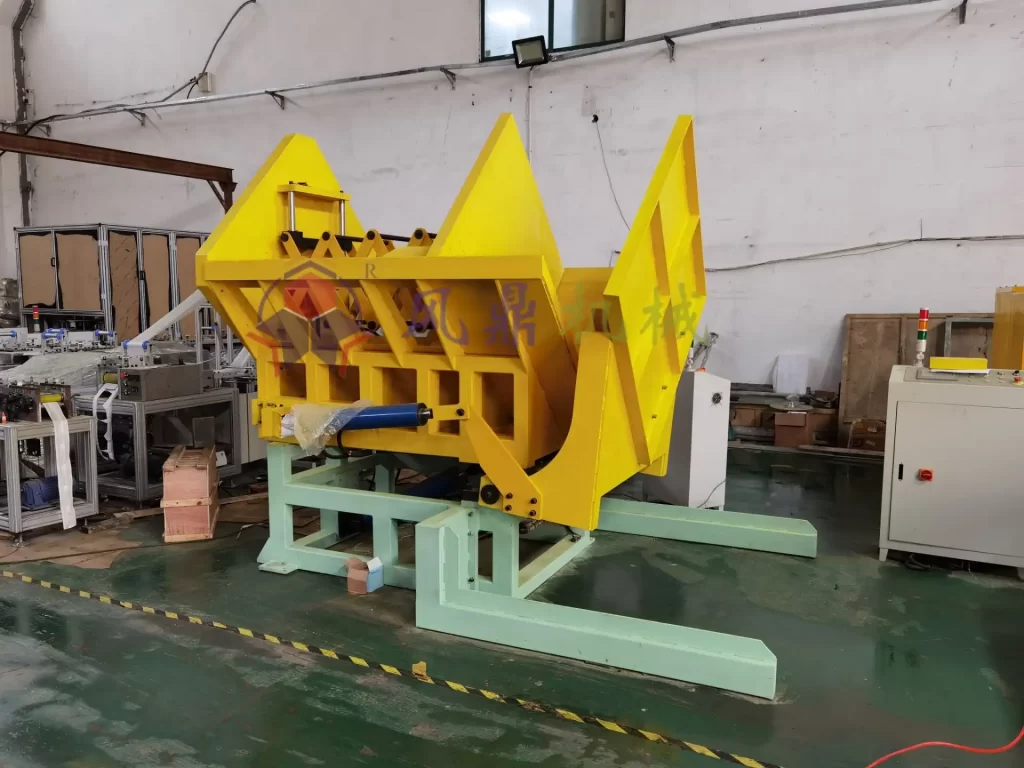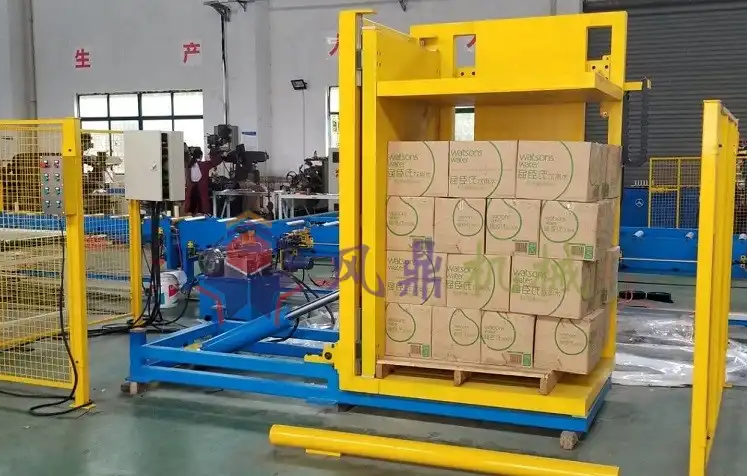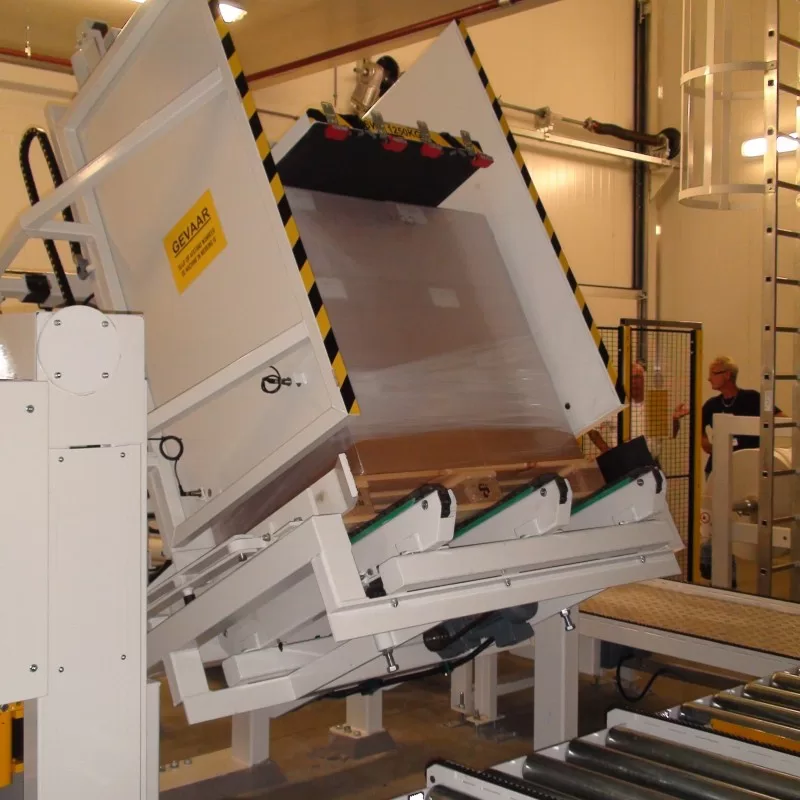Pallet Inverter Innovations: Enhancing Efficiency and Safety in 2024

In the dynamic landscape of modern warehousing and logistics, optimizing material handling processes is crucial. Pallet inverters have emerged as indispensable tools, enabling businesses to efficiently rotate, transfer, or exchange palletized loads, thereby boosting productivity, enhancing worker safety, and cutting operational expenses. These machines, designed to invert pallet loads up to 180 degrees without manual restacking, are pivotal in industries dealing with diverse goods. As we progress through 2024, pallet inverter technology continues to advance, incorporating innovations that promise to further refine material handling operations. This article delves into the latest developments in pallet inverter technology and their potential impact across various industrial sectors.

1. Advanced Automation for Seamless Integration
A primary trend shaping pallet inverter technology in 2024 is the significant advancement in automation. Driven by the broader push towards fully automated warehouse environments, pallet inverters now feature sophisticated automated capabilities that drastically reduce manual intervention.
- Smart Sensing: New models incorporate advanced sensors (e.g., photoelectric, proximity, laser scanners) and AI-powered software. These systems can automatically detect load dimensions, weight, and positioning, adjusting clamping pressure and rotation speed accordingly without operator input.
- System Integration: Enhanced integration with Warehouse Management Systems (WMS) and Enterprise Resource Planning (ERP) systems allows pallet inverters to operate seamlessly within a larger automated workflow. This includes coordination with Automated Guided Vehicles (AGVs), Autonomous Mobile Robots (AMRs), and robotic palletizing/depalletizing cells.
- Benefits: This heightened automation minimizes human error, improves precision, accelerates cycle times, reduces labor requirements, and ensures a smoother, more predictable material flow.
2. Energy Efficiency for Sustainable Operations
Sustainability remains a key focus across industries, influencing equipment design. Pallet inverter manufacturers are prioritizing energy-efficient models to lower operational costs and reduce environmental impact.
- Electric Drive Systems: A notable shift is the increased adoption of all-electric drive systems over traditional hydraulic systems. Electric drives offer quieter operation, eliminate the risk of hydraulic fluid leaks (crucial in food and pharmaceutical applications), require less maintenance, and provide more precise motion control.
- Reduced Consumption: These systems consume significantly less energy, directly lowering electricity bills. Some advanced models may incorporate regenerative braking features, capturing energy during deceleration to further improve efficiency.
- Eco-Friendly: By reducing energy consumption and eliminating hydraulic fluids, these innovations help companies meet corporate sustainability goals and contribute to a smaller carbon footprint.
3. Enhanced Safety Features for Operator Protection
Ensuring worker safety around heavy machinery is paramount. The latest pallet inverter innovations incorporate robust safety features designed to protect operators and personnel in the vicinity.
- Advanced Guarding and Sensors: Modern pallet inverters often feature comprehensive safety systems, including light curtains, safety mats, laser area scanners, and physical barriers with interlocked gates. These systems detect human presence or obstructions within the operating zone, triggering an immediate halt to prevent accidents.
- Improved Clamping: Enhanced clamping mechanisms provide secure and stable load holding during the inversion cycle, minimizing the risk of dropped loads or product damage, even with unevenly stacked or heavy items.
- Compliance: Designs increasingly adhere to stringent safety standards, such as those outlined by ANSI/ITSDF (Industrial Truck Standards Development Foundation) or relevant ISO standards, ensuring a higher level of verified operator protection.
4. Customizable Designs for Diverse Industry Needs
Recognizing that material handling requirements vary significantly, manufacturers are offering highly customizable pallet inverter designs tailored to specific industry applications in 2024.
- Industry-Specific Materials: Options include stainless steel construction for sanitary requirements in food, beverage, and pharmaceutical industries, preventing corrosion and facilitating washdown procedures.
- Tailored Functionality: Customization extends to load capacity (from light loads to several tons), clamping ranges (to accommodate different pallet sizes and load heights), rotation angles (e.g., 90°, 180°), and specialized clamping pads for delicate or irregularly shaped products.
- Environmental Adaptations: Models designed for specific environments, such as cold storage (-30°C) or explosion-proof areas, are available, ensuring reliable operation under challenging conditions.

Get Your Best Solution !
5. Smart Integration with IoT and Data Analytics
The integration of the Internet of Things (IoT) is transforming pallet inverters into smart, connected assets. In 2024, IoT-enabled pallet inverters provide valuable operational data and insights.
- Data Collection: Onboard sensors collect real-time data on performance metrics like cycle times, load weights, energy consumption, operating hours, and fault codes.
- Remote Monitoring & Diagnostics: This data can be transmitted wirelessly to a central control system or cloud platform, enabling remote monitoring of machine status and performance. Technicians can perform remote diagnostics, reducing troubleshooting time.
- Predictive Maintenance: Analyzing operational data allows for predictive maintenance. By identifying patterns that precede potential failures, maintenance can be scheduled proactively, minimizing unexpected downtime and extending equipment life. This data-driven approach helps optimize overall equipment effectiveness (OEE).

automatic pallet changing line1 6. Mobile and Compact Solutions for Flexible Use
Warehouse space optimization is critical, particularly in facilities with limited footprints. Manufacturers are addressing this need with mobile and compact pallet inverter solutions.
- Maneuverability: Mobile pallet inverters, often equipped with heavy-duty casters or designed for easy forklift transport, can be moved between different locations within a warehouse or production facility. This provides flexibility, allowing one machine to serve multiple purposes or workstations.
- Space-Saving Designs: Compact models are engineered to occupy minimal floor space while retaining full functionality. These are ideal for integrating into tight production lines or smaller storage areas where a fixed, larger inverter might not be feasible.
- Application: These solutions are particularly beneficial for businesses needing occasional pallet exchange capabilities or those operating in constrained environments.
7. Heavy-Duty Inverters for Demanding Loads
Industries handling exceptionally heavy or bulky materials, such as metals, construction materials, or paper rolls, require robust equipment. Innovations in heavy-duty pallet inverters focus on increased capacity and durability.
- High Load Capacity: New heavy-duty models in 2024 feature significantly reinforced frames, powerful drive systems (electric or hydraulic), and robust components capable of handling loads often exceeding 2,000 kg (4,400 lbs) and sometimes reaching 5,000 kg (11,000 lbs) or more.
- Enhanced Clamping: Specialized heavy-duty clamping systems are designed to securely grip and stabilize large, dense, or awkwardly shaped loads (like coils, castings, or bagged goods) throughout the inversion process.
- Durability: Built for demanding environments, these machines ensure reliability and longevity even under continuous high-stress operation, reducing downtime and maintenance costs in challenging industrial settings.
8. Conclusion: The Evolving Role of Pallet Inverters
As 2024 unfolds, pallet inverters are clearly evolving beyond basic utility tools into sophisticated components of modern material handling systems. Key innovations centered around automation, energy efficiency, enhanced safety, customization, IoT connectivity, mobility, and heavy-duty capability demonstrate their increasing value.
These advancements provide tangible benefits, including significant cost savings through reduced labor and energy use, improved worker safety, minimized product damage, and increased operational throughput. Investing in modern pallet inverter technology allows businesses to streamline workflows, enhance sustainability, and maintain a competitive edge.
Whether optimizing space in a small warehouse, integrating automation in a large distribution center, or handling challenging loads in heavy industry, the diverse range of pallet inverters available in 2024 offers effective solutions. As technology continues to advance, pallet inverters will play an even more critical role in creating efficient, safe, and intelligent material handling operations for the future.

Get Your Best Solution !